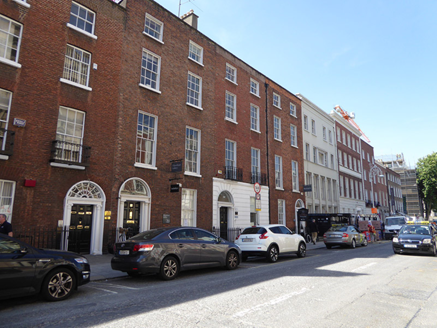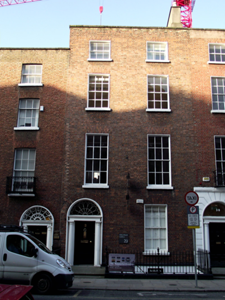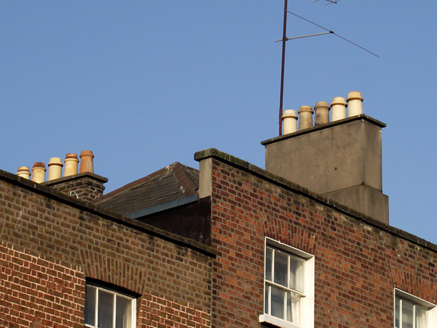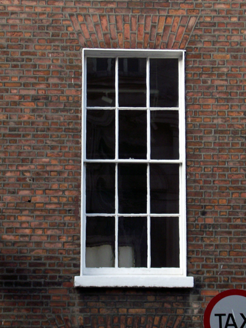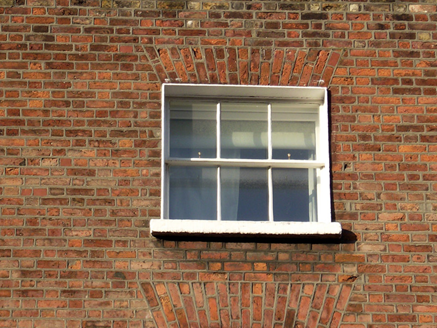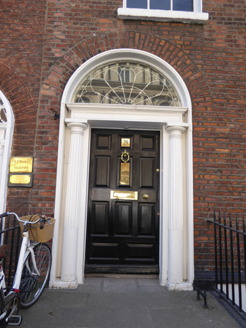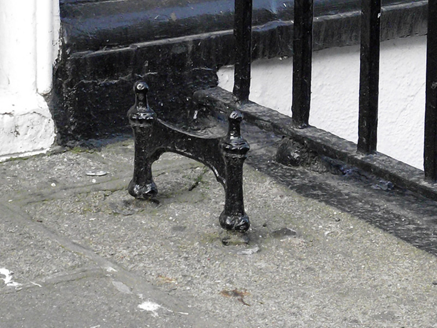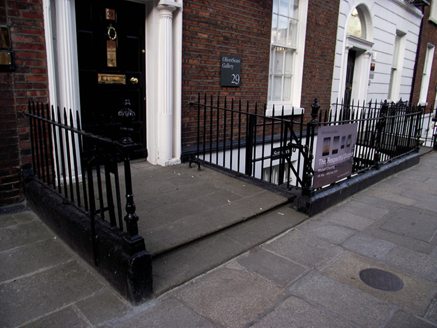Survey Data
Reg No
50100162
Rating
Regional
Categories of Special Interest
Architectural, Artistic
Original Use
House
In Use As
Office
Date
1805 - 1815
Coordinates
316203, 233679
Date Recorded
30/05/2016
Date Updated
--/--/--
Description
Attached two-bay four-storey former house over basement, built c. 1810 as east end-of-terrace of three (Nos. 29-31), having various additions to east end of rear. Now in commercial use as offices and gallery. M-profile slate roof, hipped to east end, with parapet to front having masonry coping, parapet gutters, and with rendered chimneystacks to west; pitched and hipped slate roofs to additions. Flemish bond red brick walling to upper floors over painted rendered walling to basement with masonry plinth over; brick to rear. Square-headed window openings, diminishing to upper floor, having rendered reveals, painted masonry sills and brick voussoirs. Timber sliding sash windows with some historic glass, one-over-one pane to ground floor, six-over-six pane to middle floors, three-over-three pane to top floor, and eight-over-eight pane to basement with iron grille fixed; rear has timber sash windows, tripartite to west bay and with round-headed stairs window to east bay. Round-headed door opening with moulded reveals, trabeated painted masonry doorcase with panelled entablature over two-thirds-fluted Doric columns, decorative petal fanlight, and eleven-panel timber door with brass furniture. Granite entrance platform bridging basement, having cast-iron boot-scrape, and two bull-nosed granite steps to street level. Wrought-iron railings with decorative cast-iron corner posts on painted granite plinth enclosing basement area. Yard to rear. Coal hole to street.
Appraisal
An early nineteenth-century house forming the east end of a largely cohesive terrace (Nos. 30-31). Well-retained, the typically restrained façade displays well-balanced proportions and graded fenestration and is embellished with good setting features, historic windows and a Doric doorcase with an ornate fanlight. This terrace is an important representative of the Georgian streetscape character of Molesworth Street, a street that was laid out in the 1720s by Viscount Molesworth.
